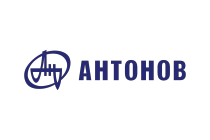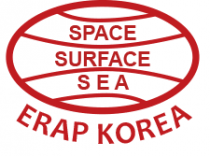Worldwide High Purity Alumina Industry to 2027 - Featuring Alcoa, Altech Chemicals and Baikowski SAS Among Others - ResearchAndMarkets.com
The "High Purity Alumina Market: Global Industry Trends, Share, Size, Growth, Opportunity and Forecast 2022-2027" report has been added to ResearchAndMarkets.com's offering.
The global high purity alumina market reached a value of US$ 1.3 Billion in 2021. Looking forward, the publisher expects the market to reach US$ 5.1 Billion by 2027, exhibiting a CAGR of 25.59% during 2021-2027.
Companies Mentioned
- Alcoa Corporation
- Altech Chemicals Limited
- Baikowski SAS
- Coorstek Inc. (Keystone Holdings LLC)
- Nippon Light Metal Holdings Company Ltd.
- Norsk Hydro ASA
- RusAL
- Sasol Limited
- Sumitomo Chemical Co. Ltd
- Zibo Honghe Chemical Co. Ltd
Keeping in mind the uncertainties of COVID-19, we are continuously tracking and evaluating the direct as well as the indirect influence of the pandemic on different end use industries. These insights are included in the report as a major market contributor.
High purity alumina (HPA), or aluminum oxide, refers to processed non-metallurgical alumina. It is usually manufactured through the hydrolysis of aluminum oxide, hydrochloric acid leaching, underwater spark discharge with aluminum and vapor-phase oxidation processes. It can be classified into 4N, 5N and 6N, depending upon the level of purity and exhibits a high melting point, corrosion resistance and thermal stability. As a result, HPA finds extensive applications in the manufacturing of artificial sapphire substrates, light-emitting diodes (LEDs), semiconductors, lithium-ion batteries, smart electronic devices, ceramics, photovoltaic cells and artificial gemstones.
Significant growth in the electronics industry represents one of the key factors creating a positive outlook for the market. HPA is used to fabricate semiconductors, which are further utilized in the assembly of personal computers, tablets, gaming consoles, televisions and servers.
Furthermore, the increasing product demand for the manufacturing of LED lights is also contributing to the market growth. Due to rising environmental consciousness, there is a shift in the consumer preference from traditionally used incandescent bulbs towards energy-efficient LED variants. HPA is also used as a coating on lithium-ion (LI-ion) battery separators used in electronic vehicles (EVs) to optimize efficiency and minimize emissions into the environment.
Additionally, various product innovations, such as the development of ready-to-use medical bio-ceramics for orthopedic and dental implants, are augmenting the market growth. Other factors, including the widespread utilization of HPA for the production of sapphire with minimal flaws in the crystal lattice, along with extensive research and development (R&D) activities, are anticipated to drive the market further.
Key Questions Answered in This Report:
- How has the global high purity alumina market performed so far and how will it perform in the coming years?
- What has been the impact of COVID-19 on the global high purity alumina market?
- What are the key regional markets?
- What is the breakup of the market based on the purity level?
- What is the breakup of the market based on the production method?
- What is the breakup of the market based on the application?
- What are the various stages in the value chain of the industry?
- What are the key driving factors and challenges in the industry?
- What is the structure of the global high purity alumina market and who are the key players?
- What is the degree of competition in the industry?
Key Topics Covered:
1 Preface
2 Scope and Methodology
3 Executive Summary
4 Introduction
4.1 Overview
4.2 Key Industry Trends
5 Global High Purity Alumina Market
5.1 Market Overview
5.2 Market Performance
5.3 Impact of COVID-19
5.4 Market Forecast
6 Market Breakup by Purity Level
7 Market Breakup by Production Method
8 Market Breakup by Application
9 Market Breakup by Region
10 SWOT Analysis
11 Value Chain Analysis
12 Porters Five Forces Analysis
13 Price Analysis
14 Competitive Landscape
14.1 Market Structure
14.2 Key Players
14.3 Profiles of Key Players
For more information about this report visit https://www.researchandmarkets.com/r/8rgfdf
View source version on businesswire.com: https://www.businesswire.com/news/home/20220711005560/en/




